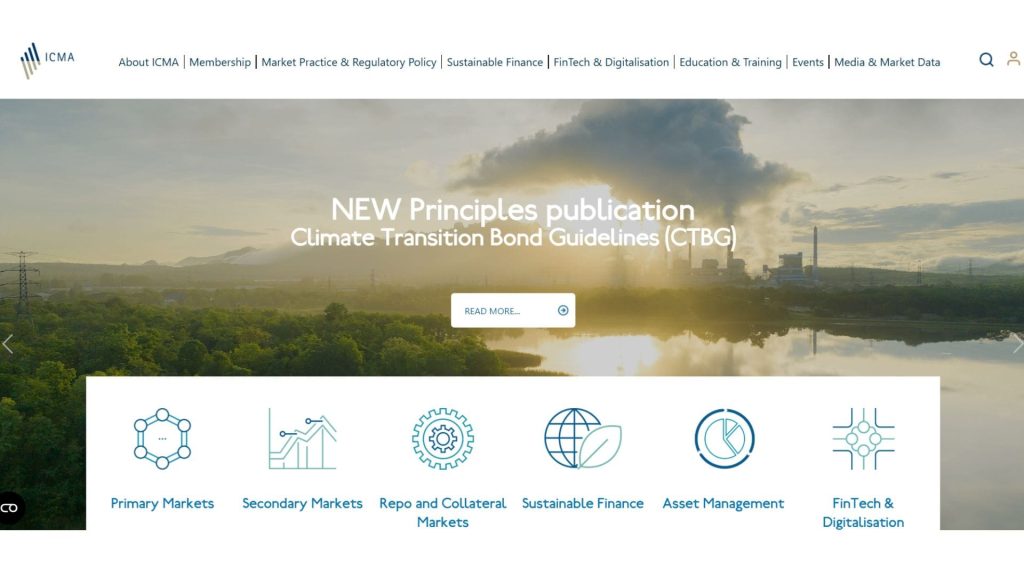• The Principles, backed by ICMA, unveiled Climate Transition Bond Guidelines to structure funding for decarbonization projects.
• The framework defines Climate Transition Projects that extend beyond traditional green bonds to target hard-to-abate sectors.
• The release aligns with the $6 trillion sustainable bond market’s next phase of growth, integrating credibility tools and transition-plan frameworks.
Global Standards Strengthen Transition Finance Framework
The Executive Committee of the Green, Social, Sustainability, and Sustainability-Linked Bond Principles (the Principles), supported by the International Capital Market Association (ICMA), has introduced new guidance for Climate Transition Bonds. Announced during its Annual Conference in Tokyo, the initiative represents the latest step in advancing global capital market standards for financing decarbonization.
The Principles, now governing a sustainable bond market valued at more than $6 trillion, form the backbone of market-based finance for climate transition and sustainability objectives. The new guidance is aimed at strengthening integrity, consistency, and accountability in transition-related investments across corporate, financial, and sovereign issuers.
Defining the Climate Transition Bond
The newly released Climate Transition Bond Guidelines (CTBG) introduce Climate Transition Bonds (CTBs) as a distinct label for use-of-proceeds instruments. The guidelines set out a clear definition and safeguards for “Climate Transition Projects” — activities that drive measurable emissions reductions or support systemic decarbonization, often extending beyond the scope of the Green Bond Principles (GBP).
Climate Transition Projects include investments in industrial decarbonization, renewable energy integration, and infrastructure adaptation. These projects target high-emission sectors such as steel, cement, and transport, addressing areas traditionally underserved by green finance.
The guidelines also recommend enhanced disclosure for issuers of climate transition-themed Sustainability-Linked Bonds (SLBs), ensuring credibility and alignment with the goals of the Paris Agreement.
Expanding the Toolkit for Transition Finance
Complementing the new bond guidelines, the updated Climate Transition Finance Handbook (CTFH) provides additional depth on transition planning and assessment. The handbook includes a new annex detailing transition-plan frameworks, tools, and methodologies to evaluate issuer credibility. It builds on ICMA’s long-standing effort to create harmonized, science-based standards for sustainability-linked instruments.
A Mapping of the Principles was also released, offering an integrated view across green, social, sustainability, and transition instruments — a resource that helps investors and regulators compare frameworks and identify overlaps.
Tokyo Conference Showcases Market Collaboration
The 2025 Annual Conference of the Principles, held in hybrid format in Tokyo and co-hosted by the Japan Securities Dealers Association (JSDA), featured key discussions on sustainable finance trends. The agenda included sessions on transition finance, nature and social bonds, market integrity, and the evolving role of regulation in maintaining investor confidence.
Speakers from multilateral institutions, sovereign issuers, and leading asset managers emphasized the growing demand for transition-focused instruments as economies seek to decarbonize without compromising industrial competitiveness.
RELATED ARTICLE: ICMA Releases New Resources on Sustainability-Linked Bonds, Green Bonds and Sustainability-Linked Loans Financing Bonds
Governance and Market Implications
For corporate and sovereign issuers, the new Climate Transition Bond Guidelines provide a pathway to access capital markets for projects that may not fully qualify under green bond criteria but are essential to achieving net-zero targets. The framework encourages transparent disclosure of transition strategies, science-based targets, and progress tracking — factors increasingly prioritized by institutional investors and regulators.
For investors, the addition of a distinct CTB label enhances comparability and mitigates risks of greenwashing. It also broadens the investable universe of credible transition assets, offering clearer differentiation between short-term sustainability initiatives and long-term structural change.
Global Relevance for Policy and ESG Governance
The updated Principles arrive at a critical moment for transition finance. As major economies accelerate implementation of their climate commitments, the alignment of capital markets with credible transition pathways becomes central to meeting Paris Agreement goals. The ICMA-backed framework provides a foundation for cross-border consistency, helping governments, financial institutions, and corporates converge around common reporting and verification standards.
By formalizing guidance for Climate Transition Bonds, the Principles aim to integrate credibility and transparency into the next phase of sustainable finance — connecting global capital with the projects and policies needed to deliver an orderly transition to net zero.
Follow ESG News on LinkedIn

